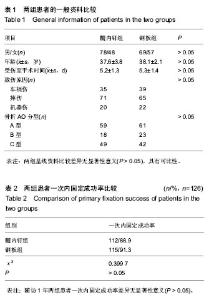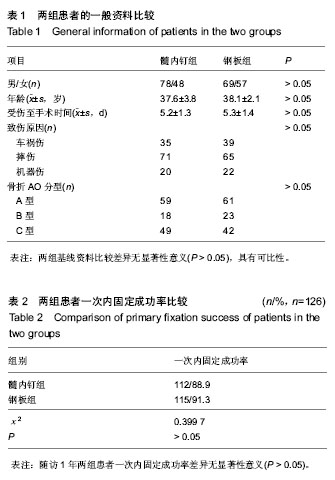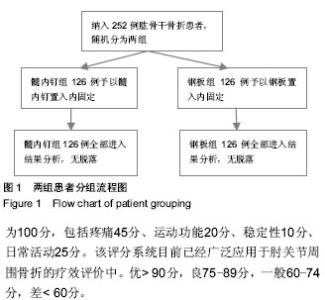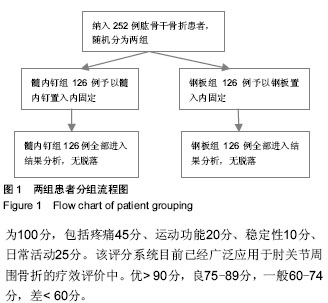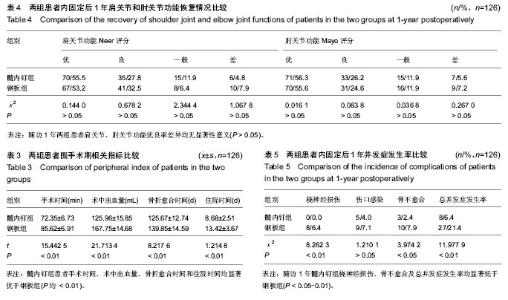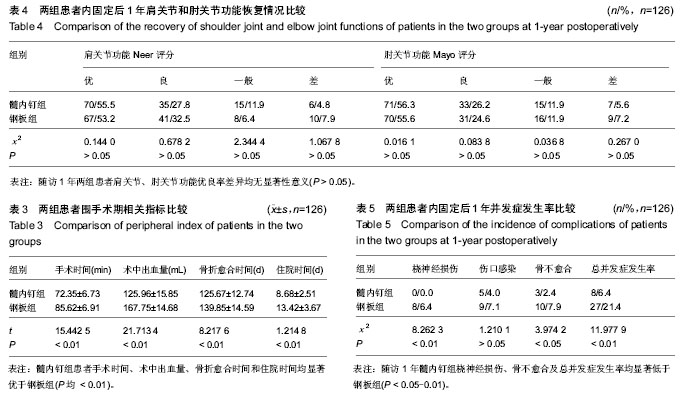| [1] 李晓光.钢丝固定法治疗骨折最初的报告[J].中国矫形外科杂志, 2014,22(6): 557.
[2] Shin S, Sohn HS, Do NH. Minimally invasive plate osteosynthesis for humeral shaft fracture: a reproducible technique with the assistance of an external fixator. J Orthop Trauma. 2012;26(10): 585-589.
[3] 侯林俊,孔祥录,朱治国,等.两种内固定方法治疗肱骨干骨折的临床比较研究[J].临床和实验医学杂志, 2011,10(15): 1172-1173.
[4] 邢丹谋,任东,彭正人,等.有限切口锁定加压钢板内固定加异体骨植入治疗复杂性肱骨干骨折[J].中华手外科杂志,2013,29(1): 1-3.
[5] 曹烈虎,翁蔚宗,宋绍军,等.微创空心钉与切口复位钢板内固定治疗肱骨大结节骨折的疗效比较[J].中国修复重建外科杂志, 2013, 27(4):418-422.
[6] Lan X, Zhang LH, Tao S, et al. Comparative study of perpendicular versus paralled double plating methods for type C distal humeral fractures. Chin Med J (Engl). 2013;126(12): 2337-2342.
[7] 王穗源,肖扬,童作明.顺行髓内钉内固定治疗肱骨干骨折的临床研究[J].重庆医学,2013,42(2):149-150.
[8] 赵隆队,王刚.经皮微创接骨板技术与髓内钉固定治疗肱骨干骨折的疗效比较[J].中华创伤骨科杂志,2011,13(6):544-548.
[9] 薛镜,岑石强,黄富国,等.肱骨干骨折不愈合的原因分析及治疗对策[J].中华创伤骨科杂志, 2011,13(10): 986-988.
[10] 秦练,陈琦,周赤兵.带锁髓内钉与加压钢板内固定治疗肱骨干骨折的疗效分析[J].中国骨与关节损伤杂志,2013,28(5):50-51.
[11] Lee HJ, Oh CW, Oh JK, et al. Minimally invasive plate osteosynthesis for humeral shaft fracture:a reproducible technique with the assistance of an external fixator. Arch Orthop Trauma Aurg. 2013;133(5):649-657.
[12] Wojcik K, Nowak R, Polak D, et al. Locked intramedullary nailing in the treatment of non-union following humeral shaft fractures. Ortop Traumatol Rehabil. 2012;14(3): 279-288.
[13] 刘东云,张丽欣.髓内钉与钢板治疗肱骨干骨折患者的疗效及安全性比较[J].中国医药指南, 2011,9(16): 47-49.
[14] 朱砂.肱骨干骨折两种固定术疗效比较[J].当代医学, 2011, 17(23):110-111.
[15] 王敬博,卢艳东,郑玉晨,等.肱骨干骨折钢板固定于髓内钉固定治疗的分析[J]. 中国矫形外科杂志, 2011,19(20):1686-1688.
[16] 张大鹏,孙大辉,谷贵山. 髓内钉固定与钢板固定治疗成人肱骨干骨折疗效的Meta分析[J]. 吉林大学学报(医学版),2008,34(6): 1054-1059.
[17] Kurup H,Hossain M,Andrew JG. Dynamic compression plating versus locked intramedul ary nailing for humeral shaft fractures in adults. Cochrane Database Syst Rev. 2011;(6): CD005959.
[18] An ZQ,He XJ,Jiang CL. Treatment of middle third humeral shaft fractures:minimal invasive plate osteosynthesis versus expandable nailing. Zhongguo Xiu Fu Chong Jian Wai Ke Za Zhi. 2010;24(12):1413-1415.
[19] Khan AS,Afzal W,Anwar A. Comparison of shoulder function,radial nerve palsy and infection after nailing versus plating in humeral shaft fractures. J Col Physicians Surg Pak. 2010;20(4):253-257.
[20] Chao TC,Chou WY,Chung JC. Humeral shaft fractures treated by dynamic compression plates,Ender nails and interlocking nails. Int Orthop. 2005;29(2):88-91. |
